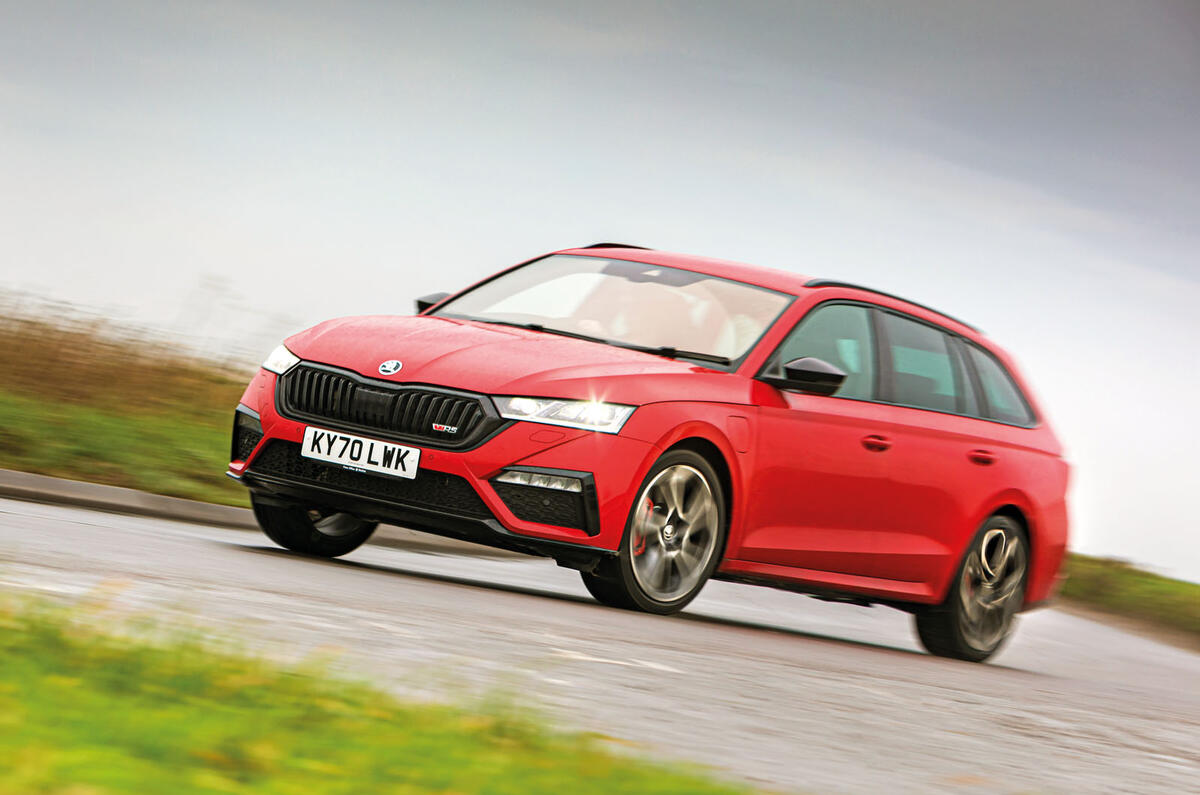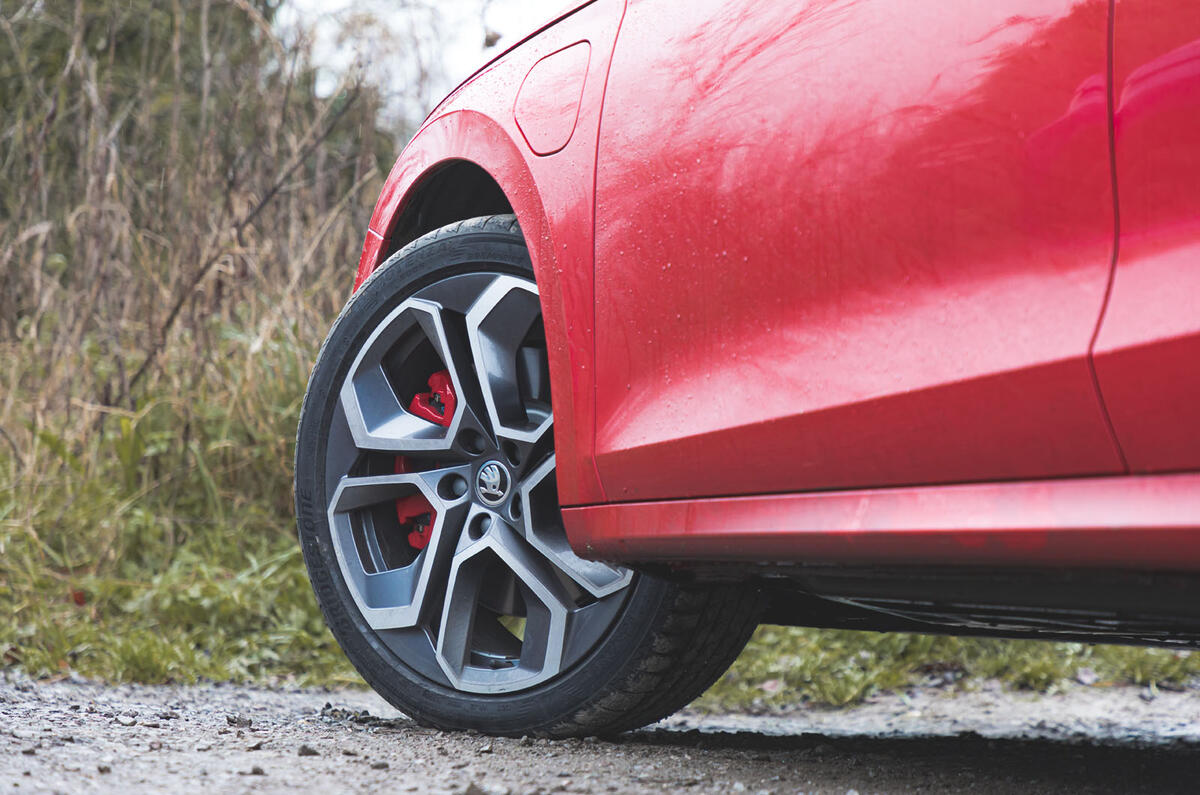What is it?
Say Volkswagen Golf GTI and you instantly know what kind of performance car you’re going to get: a front-wheel-drive petrol hot hatch. For Skoda and its Octavia vRS, those three letters can mean diesel or petrol power, front- or four-wheel drive, as well as hatchback or estate bodytyles. Now with the fourth-generation Octavia vRS, a potent plug-in hybrid has been added to the line-up, too.
We’ll get to what’s under the bonnet in a moment, but this version of the Octavia vRS is notable for stretching the definition of vRS even further by not bringing any chassis changes over the standard Octavia iV on which it is based. That means it rides 15mm higher than its petrol and diesel vRS siblings, giving it a slightly strange heightened stance on first acquaintance that belies the sporty vRS styling upgrades the iV does share with its non-electrified siblings.
That might sound like a small thing in the context of the technical revolution under the bonnet, but we’ll come back to why later. That revolution brings a 1.4-litre TSI petrol engine mated to an electric motor and six-speed dual-clutch automatic gearbox driving the front wheels only. Power peaks at a combined 242bhp and torque at a combined 295lb ft, each an output on paper worthy of the vRS badge.
Equally important in this iV version of the vRS are its electrified numbers. The 13kWh battery pack offers up to 38 miles of electric range but does in turn take 150 litres of boot space in the estate version tested here. A 3.6kW charger means a full recharge in about three and a half hours on a home wallbox charger using the Type 2 charging cable that is included as standard alongside the three-pin one.





























Join the debate
Add your comment
This iV VRS version doesn't really make much sense from a company car driver BIK perspective. 10% rather than 6% tax rate, higher lease cost, doesn't have the 'sports' suspension of the TSI or TDI versions, too much torque steer etc.
Better off saving some money and having the iV SEL version
These plug in cars should have some sort tracker fitted to them so they can be taxed fairly on battery use as most of them will never see a charger at home or at work another HMRC tax dodge
So the boot's compromised but there's no photo of the boot yet we've got individual photos of each headlight? So many of these plug-in hybrid's seem excessively compromised I wonder whether anyone except company car drivers will 'buy' them.